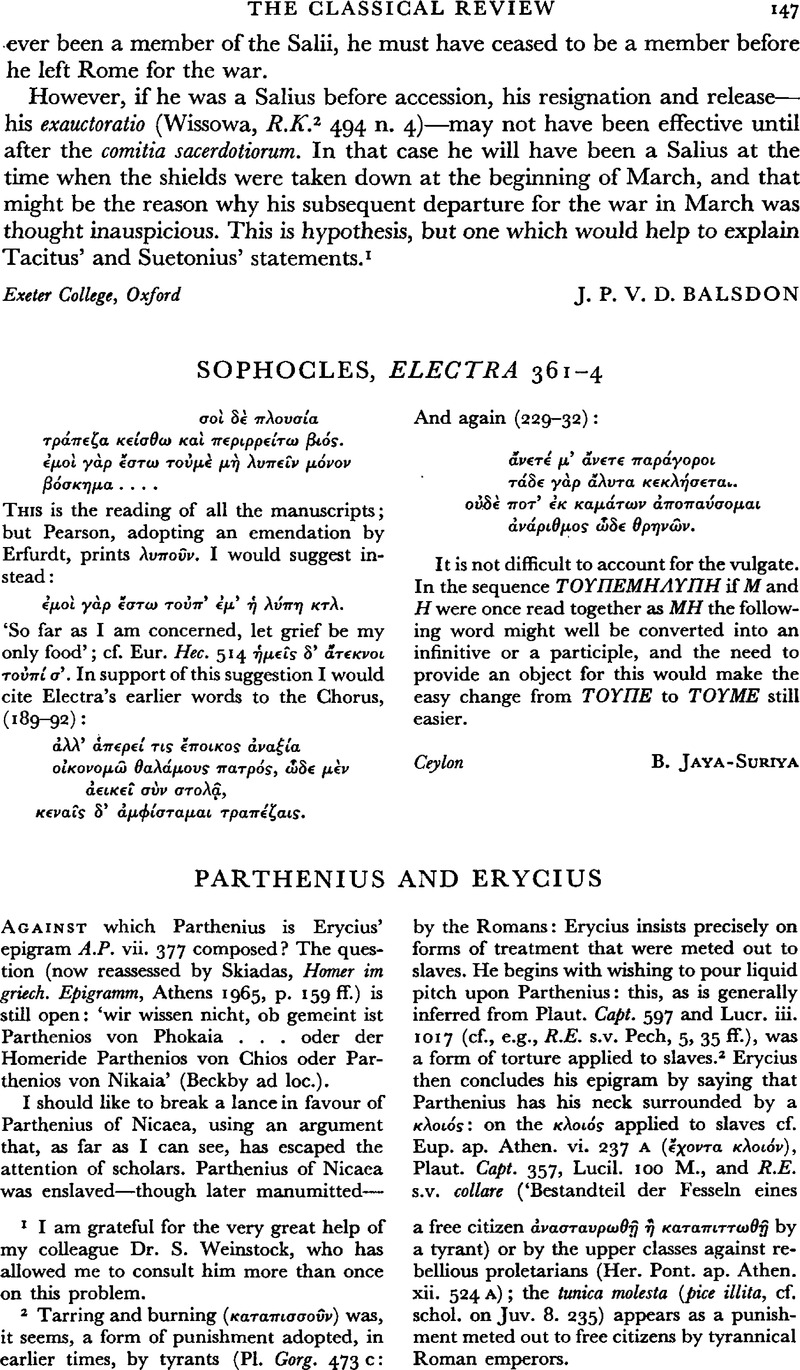No CrossRef data available.
Article contents
Parthenius and Erycius
Published online by Cambridge University Press: 27 February 2009
Abstract

- Type
- Review Article
- Information
- Copyright
- Copyright © The Classical Association 1966
References
page 147 note 2 Tarring and burning (καταπισσο⋯ν) was, it seems, a form of punishment adopted, in earlier times, by tyrants (Pl. Gorg. 473 c: a free citizen ⋯νασταυρωθῇ ἢ καταπιττωθῇ by a tyrant) or by the upper classes against rebellious proletarians (Her. Pont. ap. Athen. xii. 524 A); the tunica molesta (pice illita, cf. schol. on Juv. 8. 235) appears as a punishment meted out to free citizens by tyrannical Roman emperors.
page 148 note 1 Cf. Jacobs, ad loc. (Animadv. ii. 2 = ix, p. 361), who is the only commentator to dilate on the pitch-punishment and on the collar.


